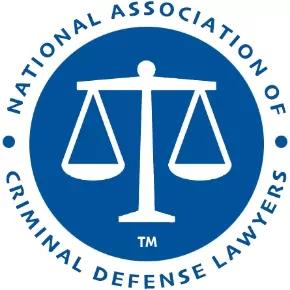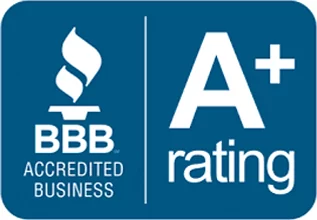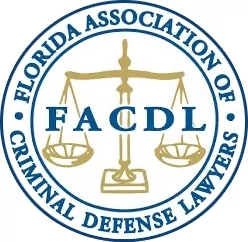Tracing Cryptocurrency Problems and Mistakes
Are law enforcement seizing cryptocurrency assets based on probabilities instead of solid proof?
At Sammis Law Firm, we are focused on helping innocent owners after their cryptocurrency account is frozen or seized for forfeiture. We know that a good cryptocurrency tracing analyst should treat every wallet as a potential false positive unless overwhelming, verified, and corroborated evidence points to direct ownership and criminal benefit. Nevertheless, law enforcement agencies often target the wrong account for seizure and forfeiture when tracing cryptocurrency transactions.
When the mistake is discovered, the law enforcement agency rarely understands why the mistake occurred or how to prevent it in the future. Even more problematic, when the law enforcement agency realizes the mistake, it rarely takes any corrective act that might bring back liability or embarrassment on the agency.
Analysts working for these law enforcement agencies often have limited training and experience. Most are trained by one of two companies, TRM Labs or Chainalysis. The proprietary software created by these companies allows the analyst to connect funds to innocent target accounts because the analyst doesn’t know when to stop tracing. Instead, the analyst might use the tracing software to go down the wrong path. To them, the “right path” often means any account with a substantial balance held at an exchange that complies with seizure warrants.
To compound the errors, the company that designed the proprietary software contributing to the analyst’s mistakes also has no incentive to correct any errors. Because these companies are paid for continued software use and contract renewals, they have little incentive to highlight or correct analytical errors that undermine law enforcement confidence in their tools.
Attorneys for Cryptocurrency Tracing Mistakes
The best asset forfeiture defense attorney must identify those mistakes, obtain the necessary documents, locate the training materials that place limits on tracings, show how the analyst failed to follow that training, file the appropriate motions to dismiss, and cross-examine the analyst to demonstrate every mistake they made.
The asset forfeiture defense attorney should double-check the tracing to triangulate the target and build a parallel record through the use of subpoenas, IP logs, and exchange data alongside blockchain analysis.
The asset forfeiture defense attorney helps innocent owners protect their right to due process. The attorney must effectively challenge the seizure to prevent a wrongful forfeiture. While the analyst may rely on software visualization tools like Chainalysis Reactor, the Claimant’s attorneys recognize that these tools are merely investigative aids, not evidence.
The civil asset forfeiture attorneys at Sammis Law Firm work with some of the top cryptocurrency tracing experts in the country. We co-counsel with local attorneys across the United States who need help when their clients’ cryptocurrency is frozen or seized by law enforcement.
If your cryptocurrency was seized by a state or federal law enforcement agency, contact an experienced civil asset forfeiture attorney focused on cryptocurrency seizures at Sammis Law Firm.
Call 813-250-0500.
Limitations on Tracing Cryptocurrency
We’ve compiled a list of training materials that outline the limitations of tracing cryptocurrency in an investigation. The analyst’s training should start with two core rules:
- You should only seize what you can prove, so don’t seize what you can’t prove.
- Tracing is not attribution; attribution is not ownership.
When the tracing begins, the analyst should document each step starting with a confirmed transaction from the victim to a known address (e.g., ATM kiosk address). Then for each subsequent transaction, each transfer must be independently verifiable. If visibility is lost, the analyst must stop tracing.
Once traceability falls below a reasonable threshold of transactional certainty—e.g., no clear input-output linkage—the analyst should terminate tracing or explicitly qualify it as speculative.
The analyst should also be trained on bright-line limits for tracing, which include:
- Analysts should recognize that tracing beyond mixers or CoinJoin transactions becomes speculative and subject to significant uncertainty.
- When the analyst identifies “multiple input, multiple output” (MIMO) transactions, they should not assume an input-output linkage without proof.
- When the analyst identifies change addresses uncertain, they should not guess which output is change without clear indicators.
- When exchange wallets with high-volume flows are found, the analyst should not presume ownership.
- When private coins are used (e.g., Monero, Zcash shielded), the tracing must stop because these blockchains cannot be reliably traced.
Before seizing a wallet, the analyst should ask:
- Is there a clear line from the victim to this wallet?
- Were mixers, CoinJoin, or MIMO transactions avoided?
- Does the wallet have a behavioral history linked to prior scams?
- Do you have corroborating evidence (e.g., subpoena, IP logs, suspect statements)?
- Is the only evidence a blockchain label with no user ID?
Known Problems with Chainalysis & TRM Labs
The companies most commonly used by law enforcement for cryptocurrency tracing include Chainalysis and TRM Labs. The analyst should understand the limitations and consequences of using this proprietary software:
- Heuristic clustering – May falsely combine unrelated wallets under common ownership.
- Omnibus exchange wallets – Funds may belong to any user of the exchange, not the suspect.
- Outdated or misapplied tags – Incorrect labeling may lead to wrongful seizures.
- Off-chain context missing – Blockchain data shows transfers, but not the reasons or agreements behind them.
Law enforcement agencies rely heavily on blockchain analysis tools, such as Chainalysis Reactor and TRM Forensics, to trace cryptocurrency transactions. These platforms can be helpful during an investigation, but they’re not infallible. Instead, these platforms are often misunderstood. When used without proper caution, they can easily lead to incorrect attributions, wrongful seizures, and flawed legal conclusions.
Both platforms use heuristic clustering to group wallet addresses that they believe belong to the same person or entity. The problem is that these assumptions are based on transaction patterns instead of confirmed identities. If two people interact with a shared service or make a similar type of transaction, the software might incorrectly assume their wallets are linked. These clusters are not independently verifiable, and they often include addresses controlled by users who are completely unrelated.
Another significant issue is the use of omnibus wallets by exchanges. When a person deposits cryptocurrency into a platform like Coinbase or Binance, those funds go into a pooled wallet controlled by the exchange, not the individual. If an analyst stops tracing when funds hit the exchange, it’s incorrect to assume that the wallet belongs to the suspect. Any seizure based on that assumption could be challenged for lack of probable cause.
Chainalysis and TRM sometimes label addresses based on reports from third parties, law enforcement agencies, or scraped data from the dark web. These labels may be outdated, overly broad, or simply wrong. Yet, we often see agents rely on them as if they’re conclusive. A label saying “fraud” or “scam” is not a substitute for real evidence, especially if there’s no way to verify where the tag came from or how it was applied.
Blockchain analysis tells you where the money moved. It doesn’t tell you why. That means it can’t show whether the transaction was part of a scam, a legitimate purchase, or something completely unrelated. Without subpoena responses, chat logs, emails, or other off-chain context, you’re guessing. And guessing is not a basis for seizure.
Chainalysis and TRM are good for generating leads. But they do not — and cannot — prove ownership or criminal intent by themselves. Every case needs to be backed by corroborating evidence: KYC records, statements, on-chain patterns that match off-chain behavior, and so on. If you’re relying solely on what the software shows, you’re not building a strong case — you’re risking someone’s rights.
This article was last updated on Friday, June 13, 2025.














